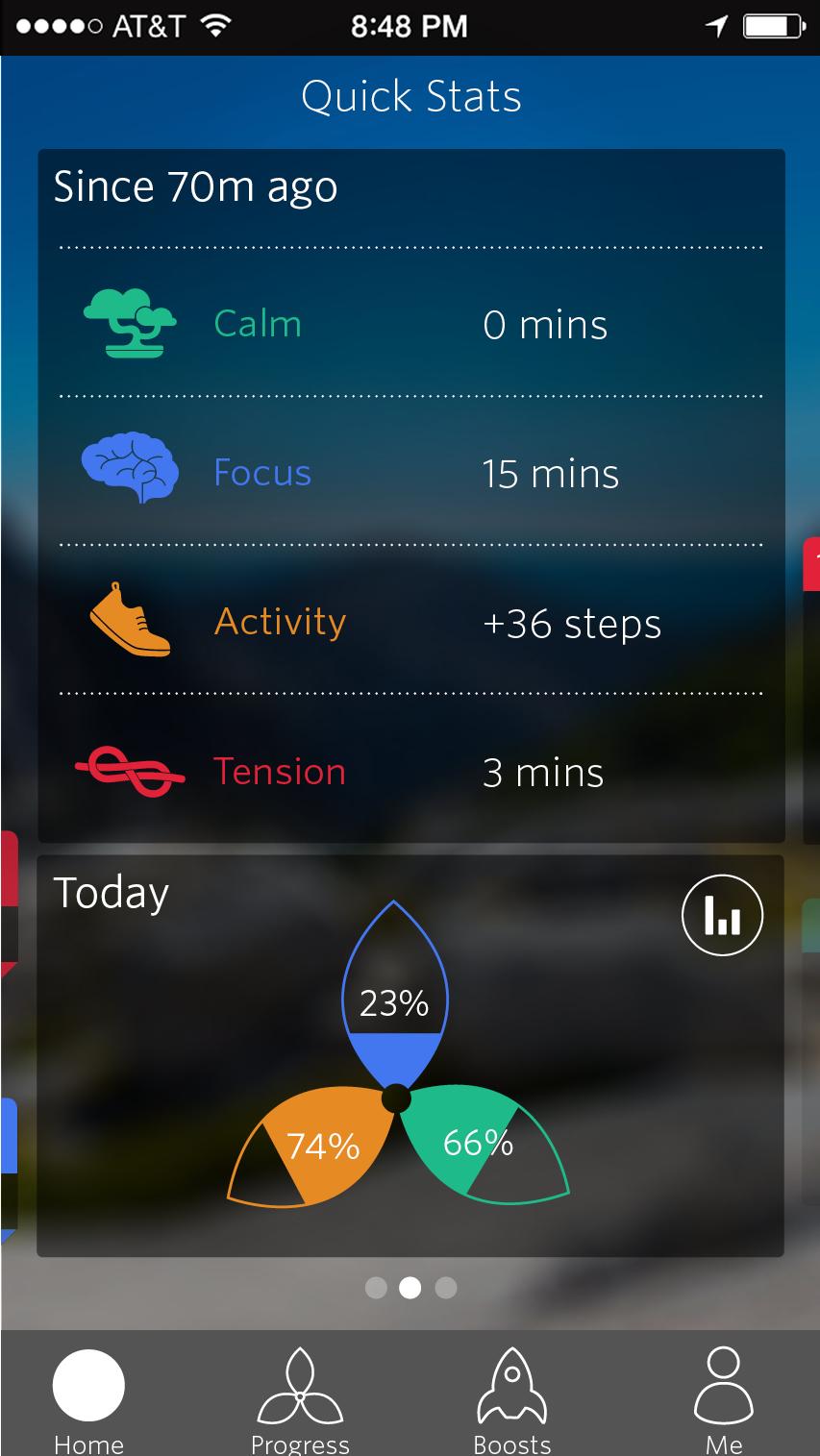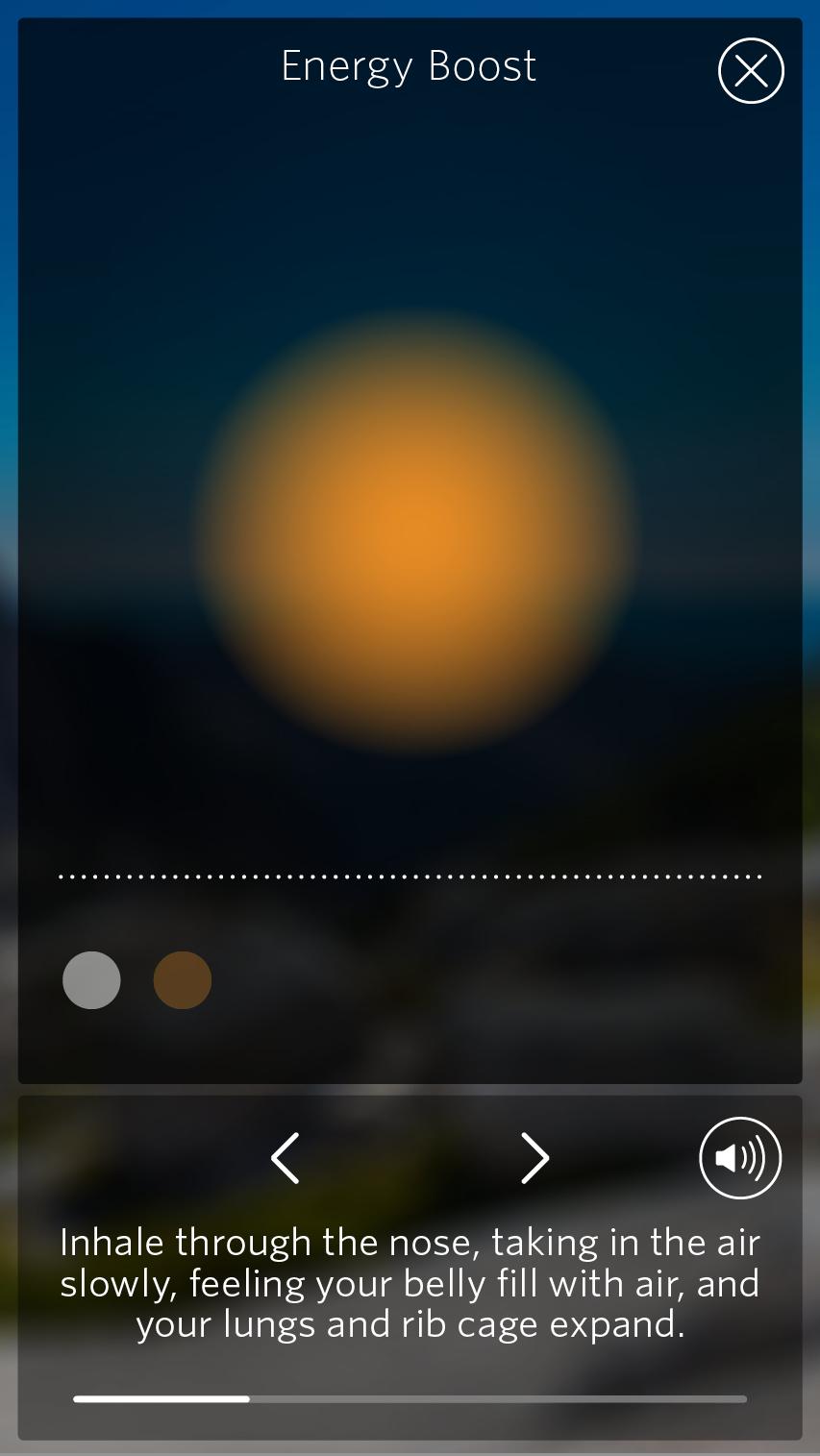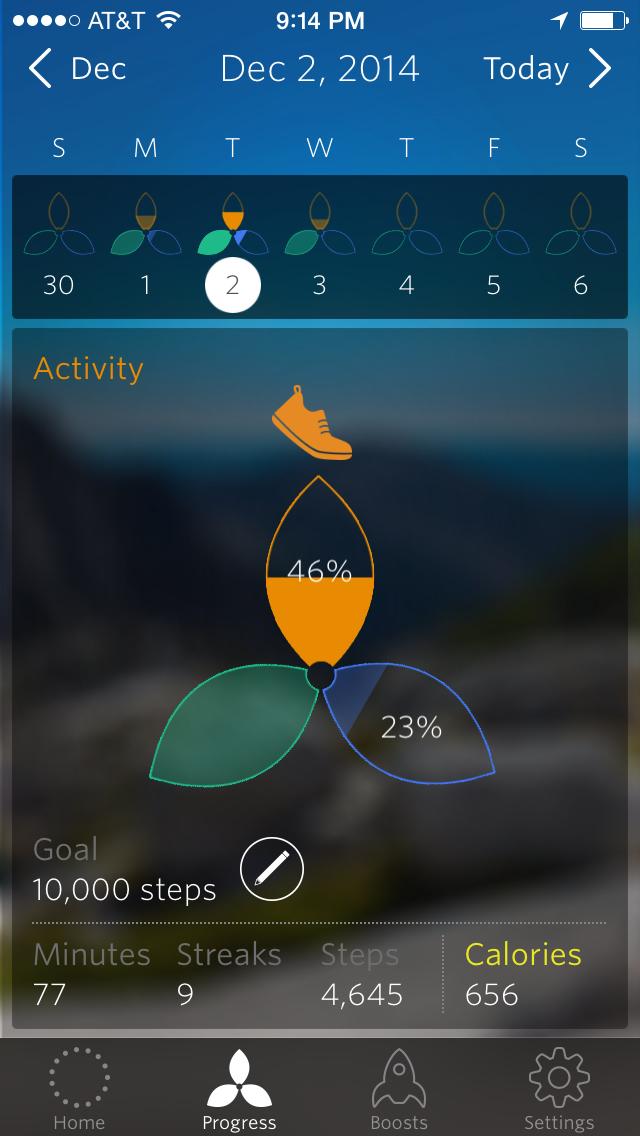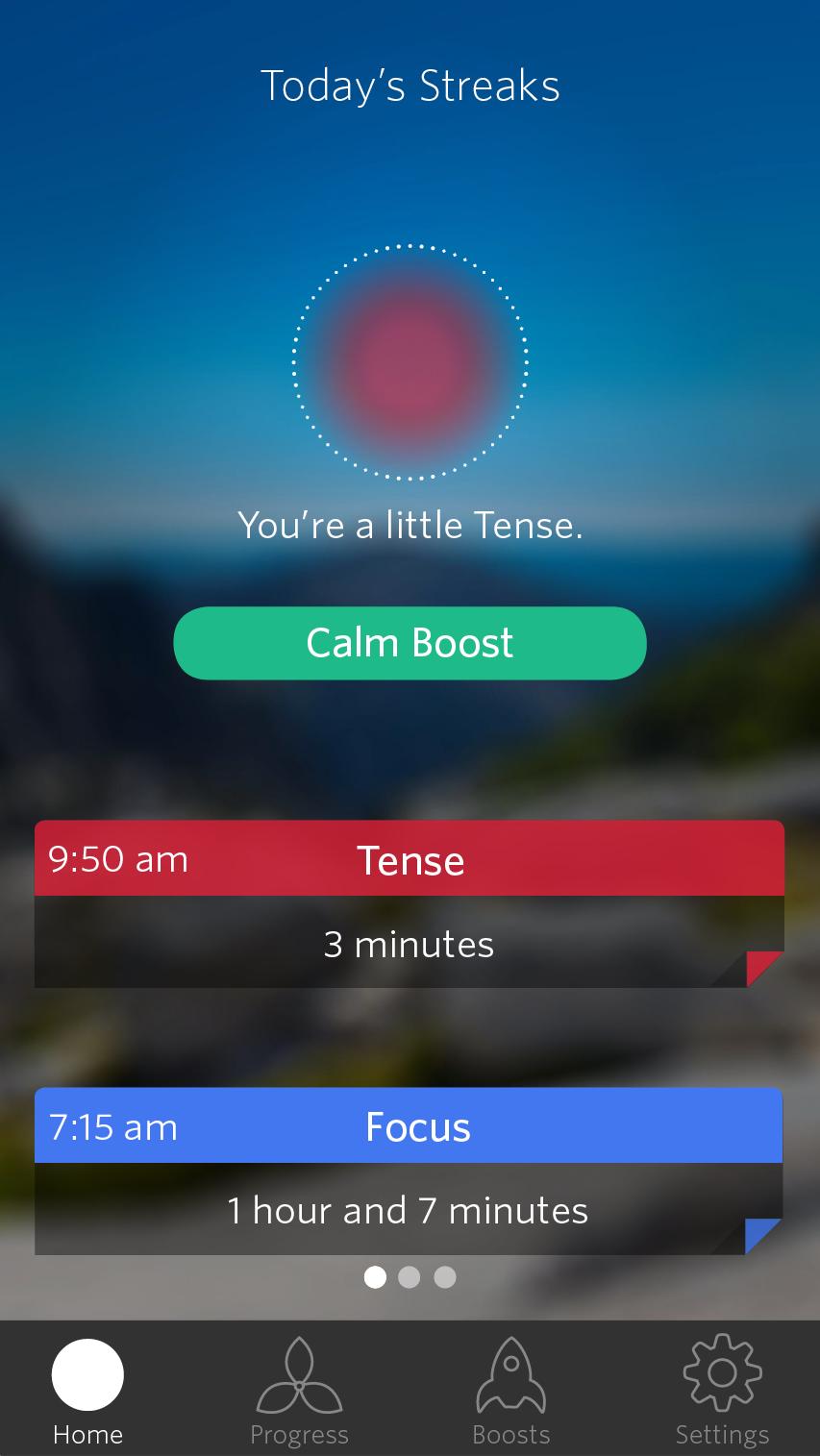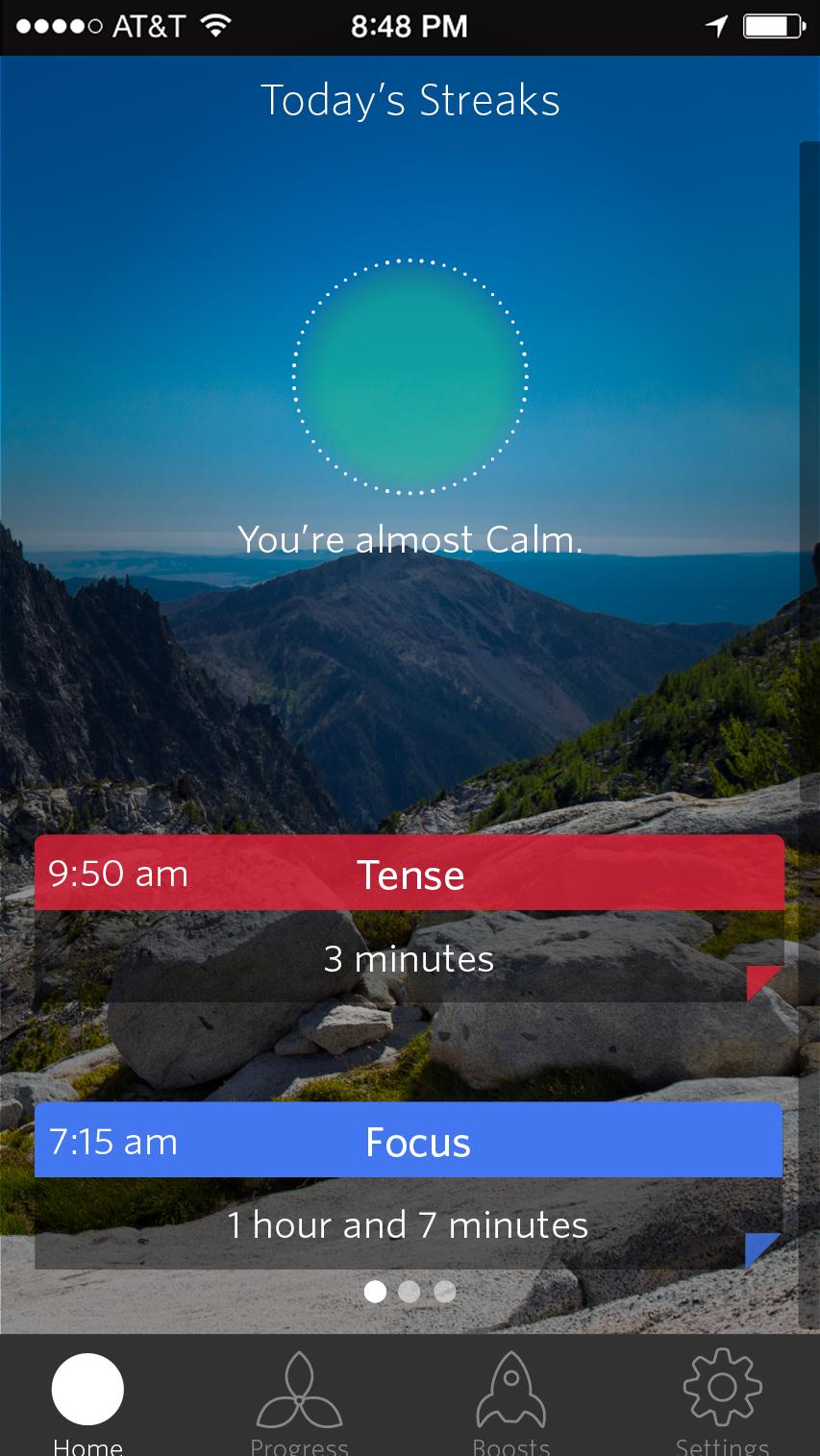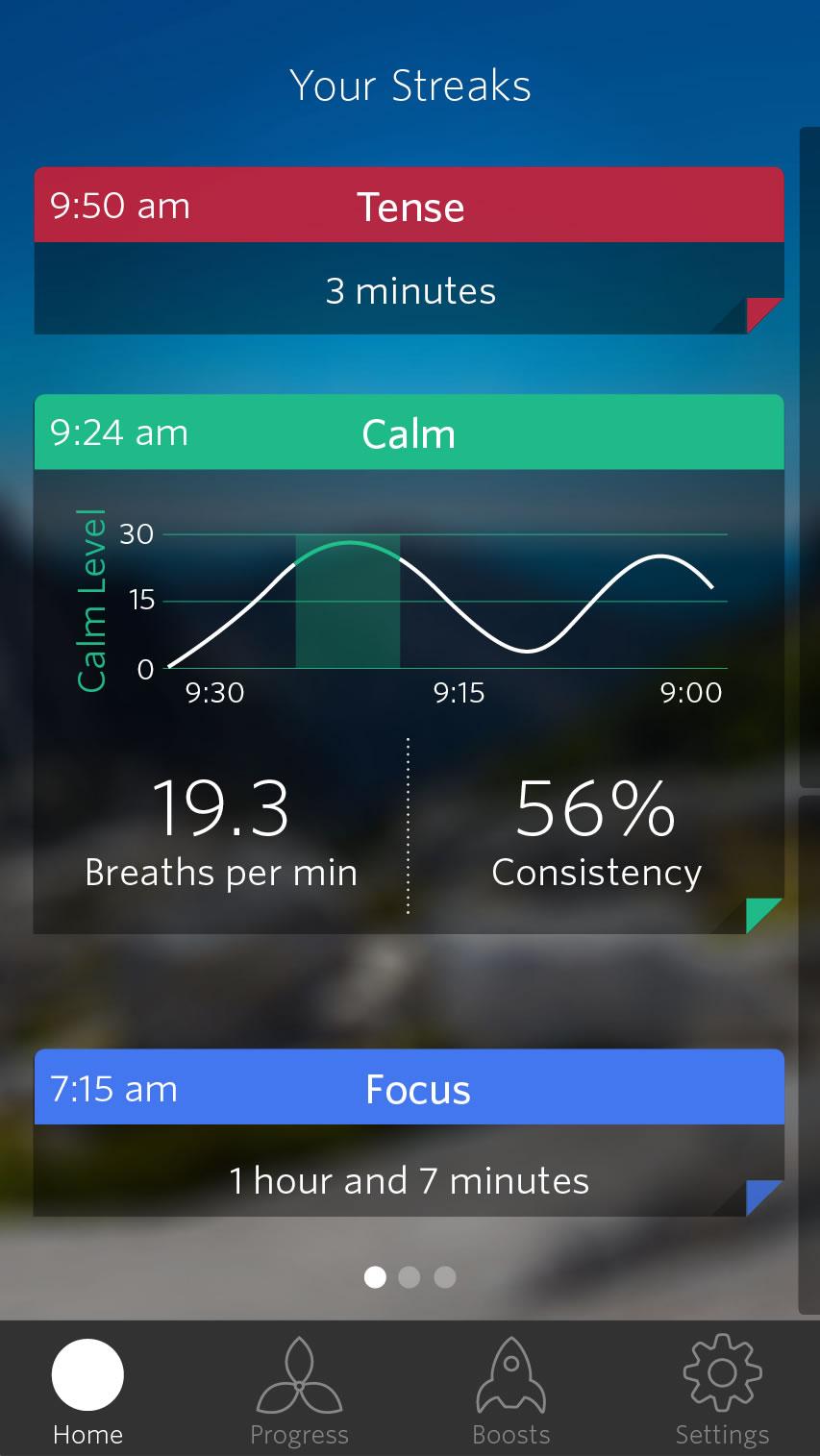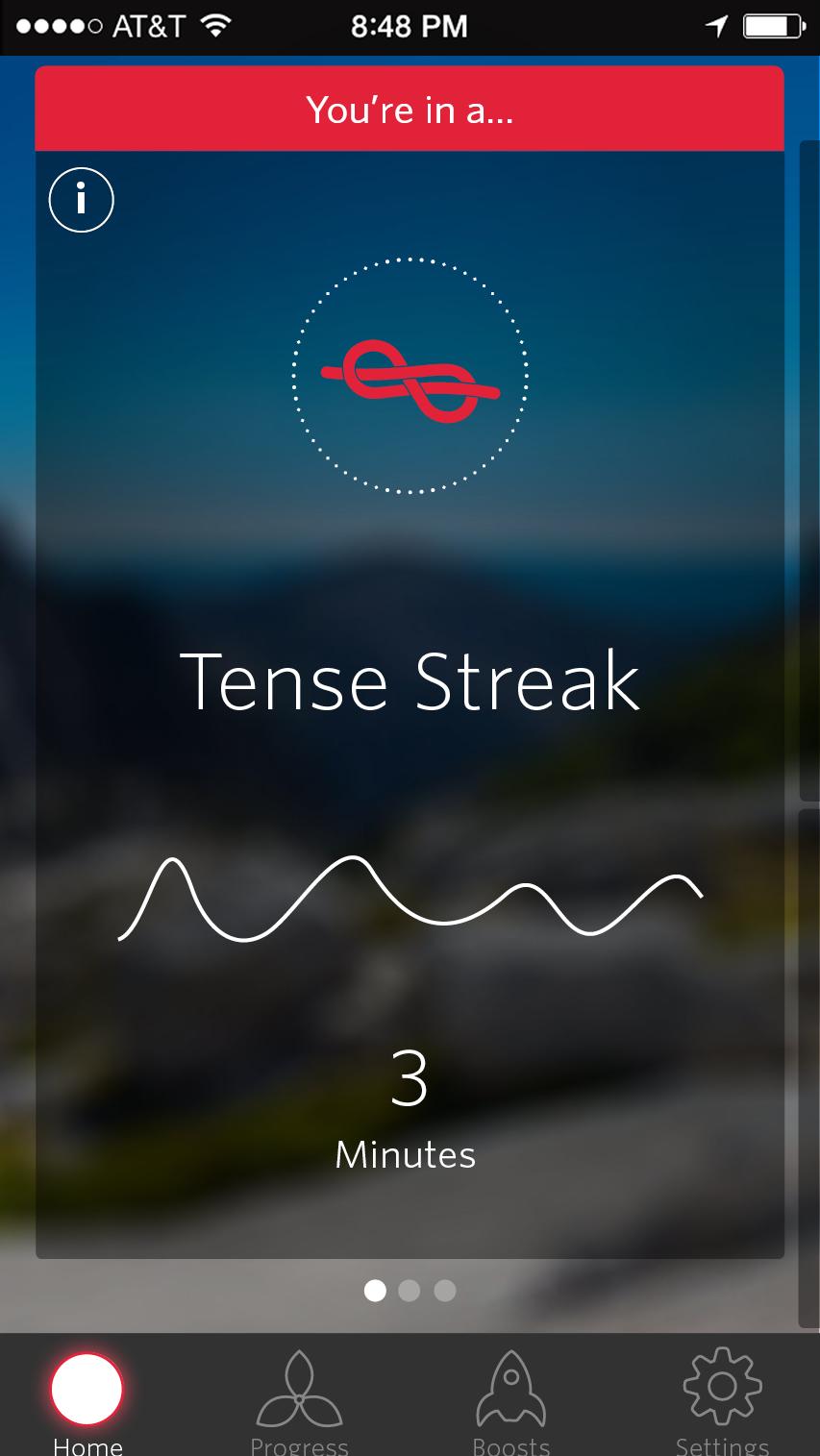“Every breath you take, every move you make, Spire will be watching you – and it’ll calm you better than a Zen master.”
- Great battery life
- Aesthetically pleasing shape
- Wireless charging
- Companion app is well-designed
- Inaccurate fitness tracking
- Buggy
- Occasional dynamic balance issues
Is breathing the new walking?
San Francisco-based Spire’s inspiration is a clip-on device that looks like a small rock and monitors your fluctuating stress and focus levels by analyzing not just your steps and body position but also your breathing. It’s about the size of an Oreo and probably weighs about as much as one too (but don’t eat it).
Spire’s technology is housed in a small, semi-soft granite body; clip it to your belt or bra and each breathe appears on your phone’s screen in real time. Inhale. Exhale. Inhale. Exhale. By watching the rhythm of your lungs, Spire can tell if you’re tense and need to take a few breaths or just visualize your focus, making it easier to stay calm. It acts like a “regular” activity tracker, too: It knows when you’re up and moving. Then it sends all of that data, via Bluetooth, to a compatible iPhone app.
Is this the innovation the wearable world has been waiting for?
Basics about breathing
As your life becomes more hectic, the thinking goes, your health becomes a combination of things beyond the physical, including productivity and focus. And breath is the best physiological indicator of these things — which is why every breath you take, and every move you make, Spire will be watching you.
Spire isn’t intended to interrupt you each time you’re stressed, but rather to bring mindfulness and awareness of tension to this chaos.
The technology took about 4 years to develop (4 years, 74 prototypes, 8 apps, and about 1 million analyzed breaths to be exact), just started shipping last week, and costs $150. It was created by Jonathan Palley and Neema Moraveji at Stanford’s Calming Technology Lab (yes, there is such a thing).
The science behind Spire is fairly simple, Palley told Digital Trends: When stress triggers the brain’s fight or flight response, the heart rate elevates, breathing becomes shallow, and muscles tense up. Spire picks up the body’s information and sends this data to a companion smartphone app via Bluetooth. Spire isn’t intended to interrupt you each time you’re stressed, he explained, but rather to bring mindfulness and awareness of tension to this chaos.
To that end, the device creates a record of respiratory, and offers alerts and real-time guidance on how to control their emotions and stress through breathing exercises. Algorithms in the small sensor process breathing, notifying the wearer when these patterns are consistent with stress, a developing asthma attack, sleep apnea, and more. By gamifying the experience, Spire offers an incentive to work on breathing technique — the only stress indicator people can control.
Getting started with Spire
I wore the device for about two weeks prior to its official launch. And despite my frantic days, Spire tells me I am pretty Zen all day long, though seemingly most stressed during driving and rushing from meeting to meeting.
The device itself reminds me of a Fitbit Zip or Misfit Shine (minus the band). The stone-like side of the device must be worn directly against your chest or torso (inside your waistband) for accurate measure.
Using its real-time breathing data, Spire showed me how tense or distracted I really am. The app then nudged me to focus, breathe deeply, and calm down. And it works! Each time I paused to focus on my breathing, I felt calmer, more focused, and ready to get on with my day.

Despite a few bugs we’ll get to in a moment, Spire was very easy to use. Simply install and open the app (available for Apple and Android), pair the device, and you’re ready to go. Clip Spire to your pants or bra (ladies only) and every breath will be visualized and captured within the app in real time. Imagine a diaphragm expanding and contracting on your phone’s screen.
Now, let’s talk about those bugs. Immediately out of the box, I ran into issues charging the device. Despite several hours spent on the supplied wireless charging plate, the app said it was only 80 percent charged. It also didn’t pair right away; it took me several tries to get the device and app synced. Spire told me not to worry: The charging issue is a small bug that was fixed in an update I hadn’t downloaded yet. And it wasn’t that the device wouldn’t fully charge, but the app was miscalculating the percent charged.
It works! Each time I initiated a Boost, I felt calmer, more focused, and ready to get on with my day.
But my problems didn’t end there. I also had issues pairing the device with my phone — often the app broke communication with the device, which was tremendously frustrating. I’d say that this drove my stress levels up, though because of the connectivity issues, I couldn’t quantify or prove that.
The other critical issue that I had was accuracy. Those who know me know that I am a wired man. While other devices consistently tracked my steps and activities, Spire’s tracking was erratic. On some of my most active days, while achieving 150 percent of my day’s goal according to other devices, Spire had only tracked me to 50 percent.
The Application
The Spire app prompts you to set daily goals for Calm, Focus, and Activity. It has three main sections: Home, Progress, and Boosts. The home screen is the most used and important, since it’s the screen that provide real-time breathing data, visualized by a cloudy circle that fills and empties as you breathe. The home screen also shows streaks of activities across the day.
Boosts are guided visual and audible exercises intended to help change one’s state of mind or being, and are used throughout the day to become more focused or less stressed. Through alerts, Spire nudged me to engage in a Calm Boost or a Focus Boost when it saw me stressed out. Guided exercises that visualized my breathing pretty successfully shifted my state of mind, adding calm and focus to my day.
The app itself is well-designed and very user friendly. Users can track their progress daily in an interactive three-leaf graphic that breaks down daily progress and percent to goal. Users can also review weekly activities and historical data to better understand how to become calmer and more focused, which should lead to better health. All of this data allows users to become more introspective and in tune with their bodies and mind.
Spire comes with a nifty charging plate that uses Qi wireless charging technology. Simply place the device atop the tray and it will automatically begin charging. So cool! The device gets very high marks on battery life too; it can go a week on a single charge.
Is a breath monitor for you?
Spire is very different from other trackers or wearables — and that’s what I love about it. At times when I was stressed, the app intervened and calmed me down. And despite my acute ADHD, the app seemed to make me more focused.
The inaccuracy in general fitness data points means this isn’t the best all-in-one fitness device. At $149, you’d likely do much better with a more traditional device like Fitbit Charge, Jawbone UP, or Withings Pulse 02.
The initial bugs I found shouldn’t be overlooked or dismissed. It’s part of the challenge of a new product launch, and you can expect more to crop up over time. If that potential stresses you out, get a Spire to deal with your anxiety. Stop counting steps, and start counting sheep.
Highs
- Great battery life
- Aesthetically pleasing shape
- Wireless charging
- Companion app is well-designed
Lows
- Inaccurate fitness tracking
- Buggy
- Occasional dynamic balance issues
Editors' Recommendations
- The 5 best Bluetooth trackers for 2024
- The best Fitbit devices in 2023: 6 best watches and trackers
- The Fitbit Charge 6 is a fitness tracker and smartwatch hybrid
- The best mental health wearables to help with stress
- The best hurricane trackers for Android and iOS in 2022




